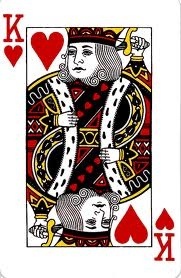When I read F. Scott Fitzgerald’s The Great Gatsby in my tenth grade English class, I remember that the narrator, Nick Carraway, intrigued me more than Jay Gatsby. So much so that, when my teacher indicated that Gatsby was the protagonist of the novel, I almost wanted to disagree. From a literary standpoint, yes, Jay Gatsby is the central figure of the novel – his name is in the title; however, the person’s eyes through whom I saw Gatsby’s story weighed more heavily on my mind. Since then, I’ve found myself frequently fascinated with the side-kick character.
As I have finally finished Herman Melville’s Moby-Dick, I ponder the situation in which Captain Ahab finds himself, seeking vengence on a white whale while seeming to shake his fist at God. Though Ahab’s story may be powerful and his King Lear-esque monologues make him one of literature’s great protagonists, I couldn’t help but continue to go back to the opening line of the novel: “Call me Ishmael”. Ahab is seen through Ishmael’s eyes and I cannot help but let this narrator take over my thoughts on the novel.

Nathaniel Philbrick, in his short book Why Read Moby-Dick, referrs to Ishmael as an agnostic. I’m not sure what the official definition of an agnostic is; however, if it’s someone who seems to sail comfortably through the oceans of both faith and doubt, then that would describe Ishmael. As I’ve stated in previous posts, he sees the “believer” and the “infidel” with “equal eyes”. I was not sure that I would enjoy some of the chapters in which Ishmael explains the biology of a whale or the process by which his colleagues obtained oil from the whales they caught. But Ishmael (or Melville) fits these into his story with such ease and uses them to display his thoughts on life in general, that they ultimately became some of my favorite chapters. I especially enjoyed his comparison of a whale’s stomach to the Kentucky Mammoth Caves. And just as Ishmael starts the novel; he finishes it – alone.
Philbrick points out the poetry Melville uses in his prose as one of the author’s greatest strengths. One of my favorite passages contains Ishmael’s thoughts on the almost drowning of his shipmate, Pip. Pip ultimately keeps his life but loses his sanity:
The sea had jeeringly kept his finite body up, but drowned the infinite of his soul. Not drowned entirely, though. Rather carried down alive to wondrous depths, where strange shapes of the unwarped primal world glided to and fro before his passive eyes; and the miser-merman, Wisdom, revealed his hoarded heaps; and among the joyous, heartless, ever-juvenile eternities, Pip saw the multitudinous, God-omnipresent, coral insects, that out of the firmament of waters heaved the colossal orbs. He saw God’s foot upon the treadle of the loom, and spoke it; and therefore his shipmates called him mad. So man’s insanity is heaven’s sense; and wandering from all mortal reason, man comes at last to that celestial thought, which, to reason, is absurd and frantic; and weal or woe, feels then uncompromised, indifferent as his God.
This is one novel that I already feel warrants re-reading. I think it would be interesting to read it’s chapters individually and randomly.
On a side note, apparently this novel has caused a minor literary controversy over the decades. The question to hyphenate or not to hyphenate has stirred some debate. What I would call literary purists seem to feel that the title of the novel should be hyphenated while referring to the name of the actual whale should not. From what I’ve read, it seems Melville hyphenated his original edition for the title but did not hyphenate the whale’s name throughout the novel.
You learn something new everyday.
Here are the other posts I’ve written about Moby-Dick.
Why Read Moby-Dick
Call me…intrigued
More from Moby-Dick
Ishmael on Religion












